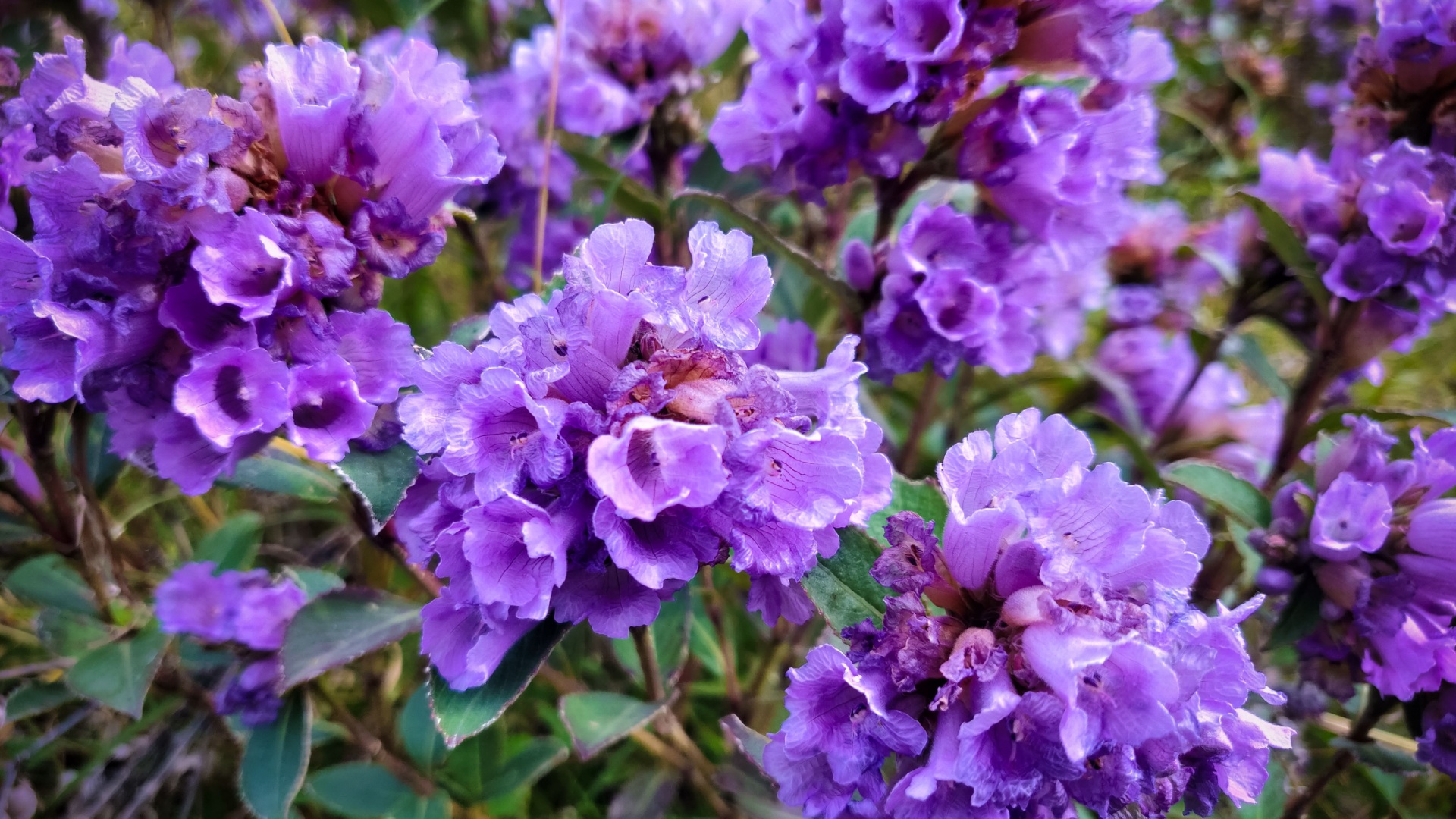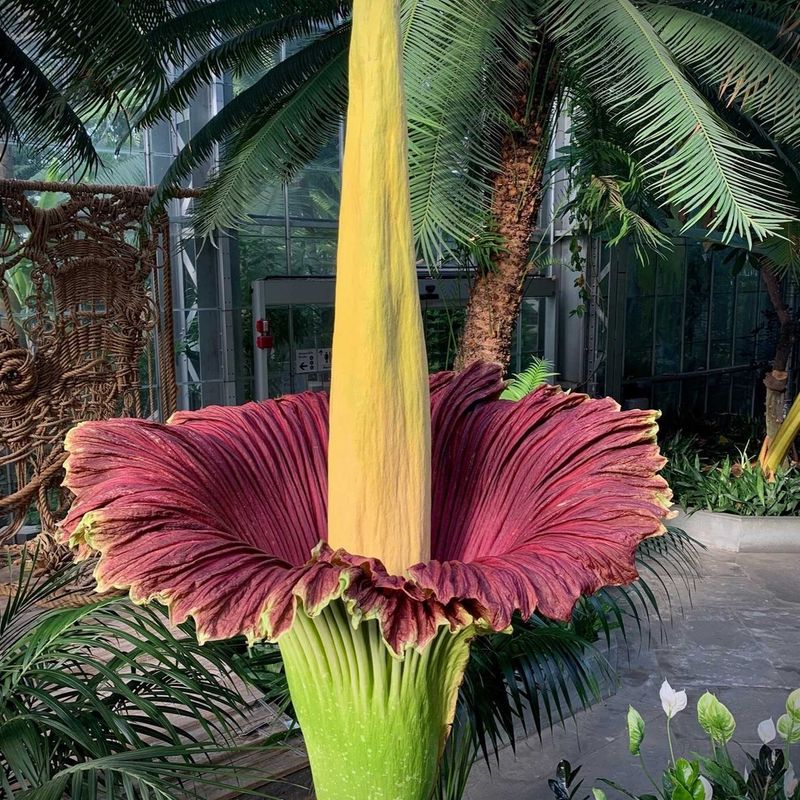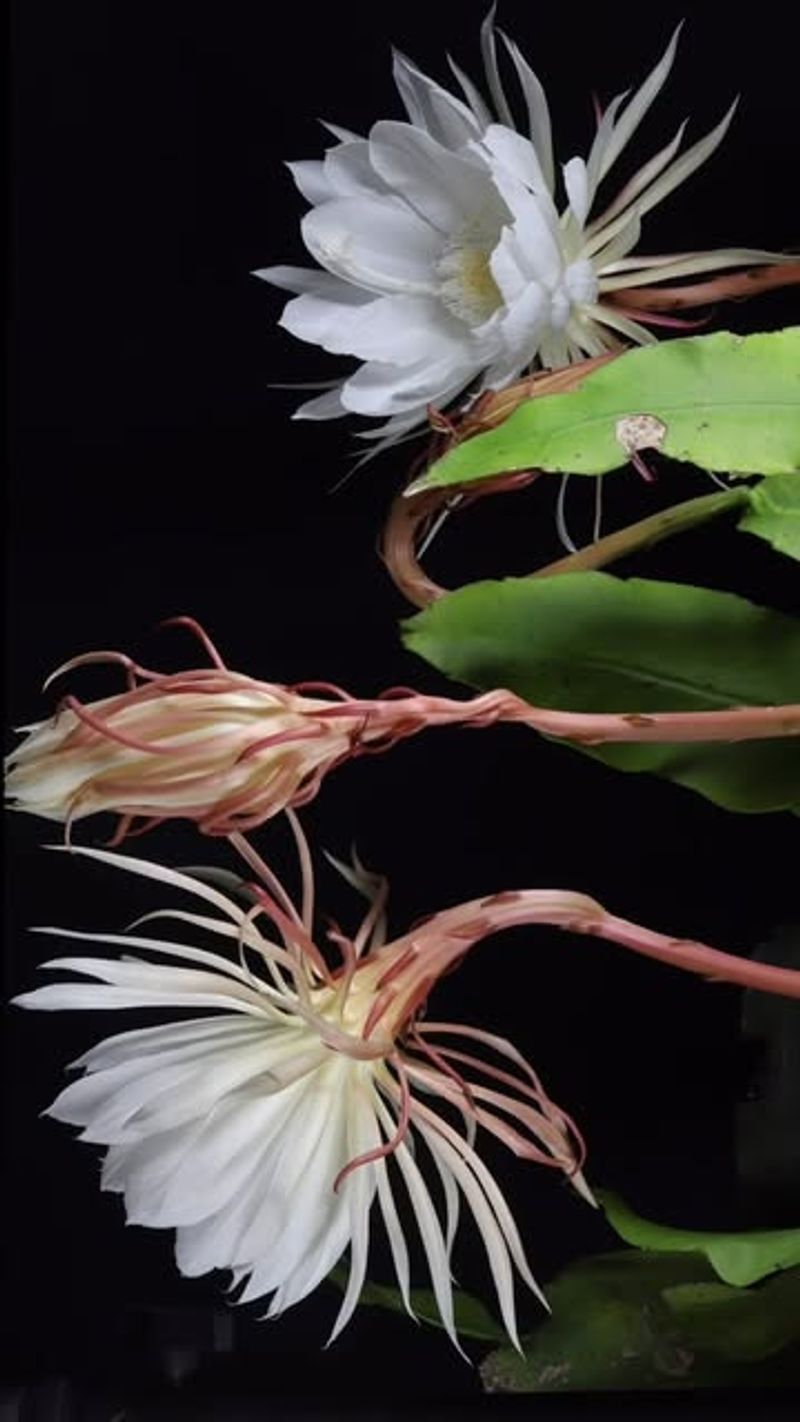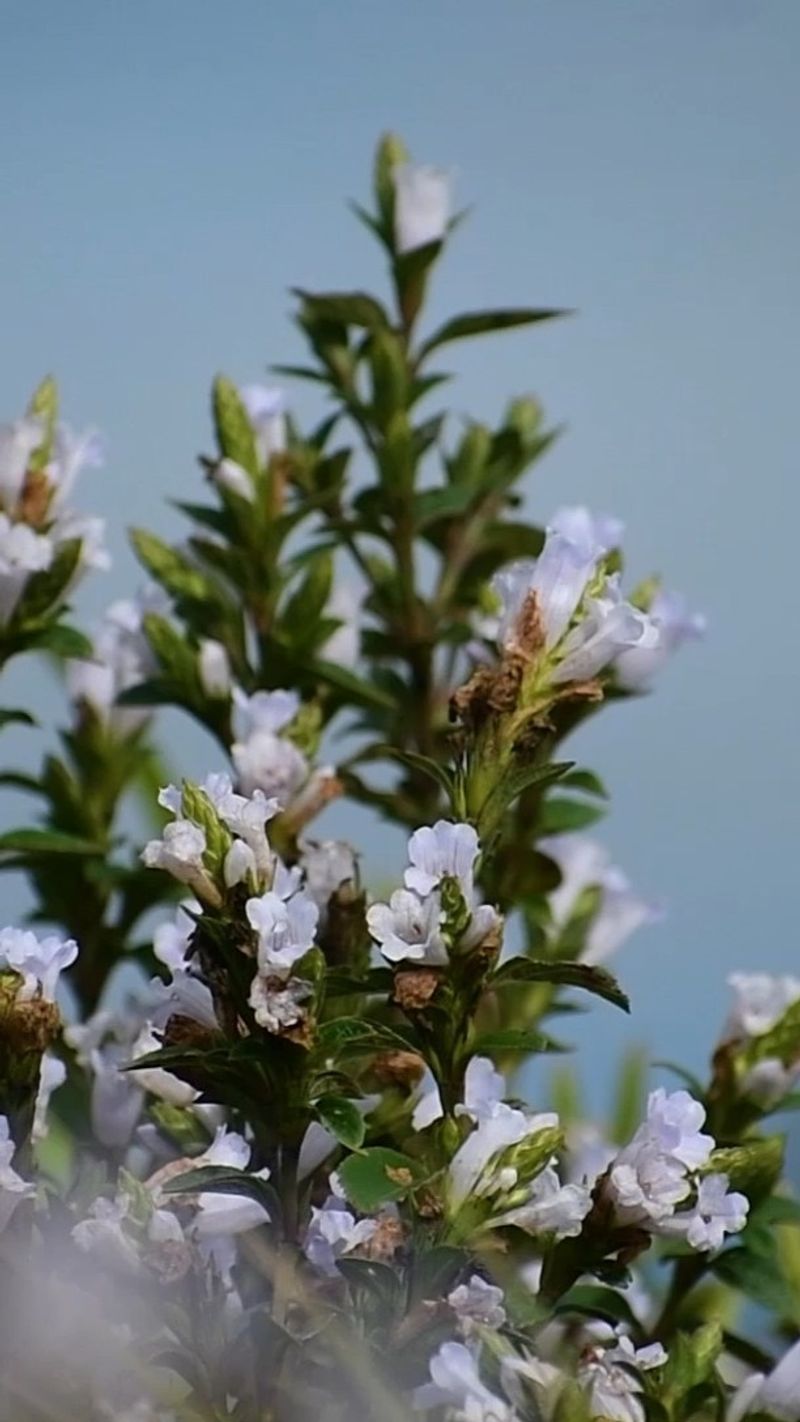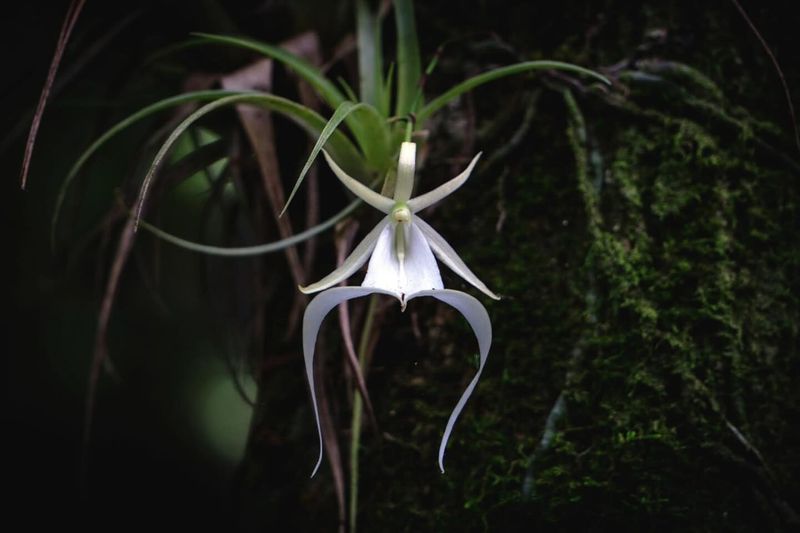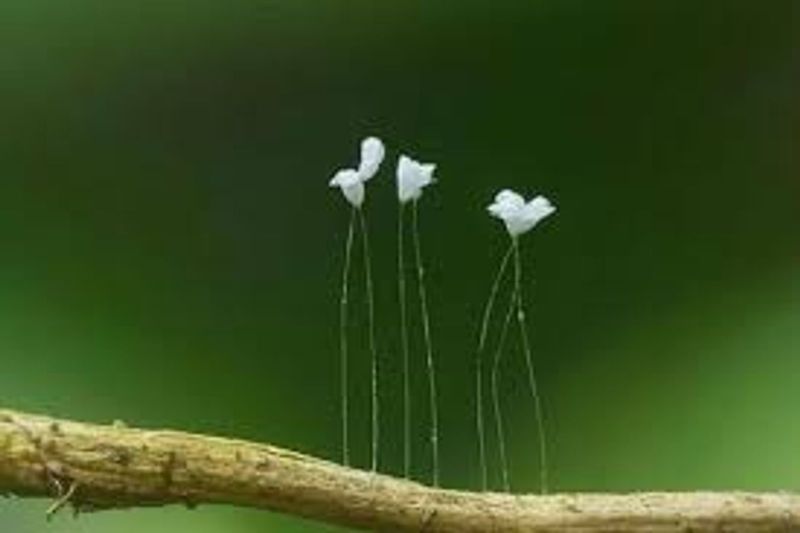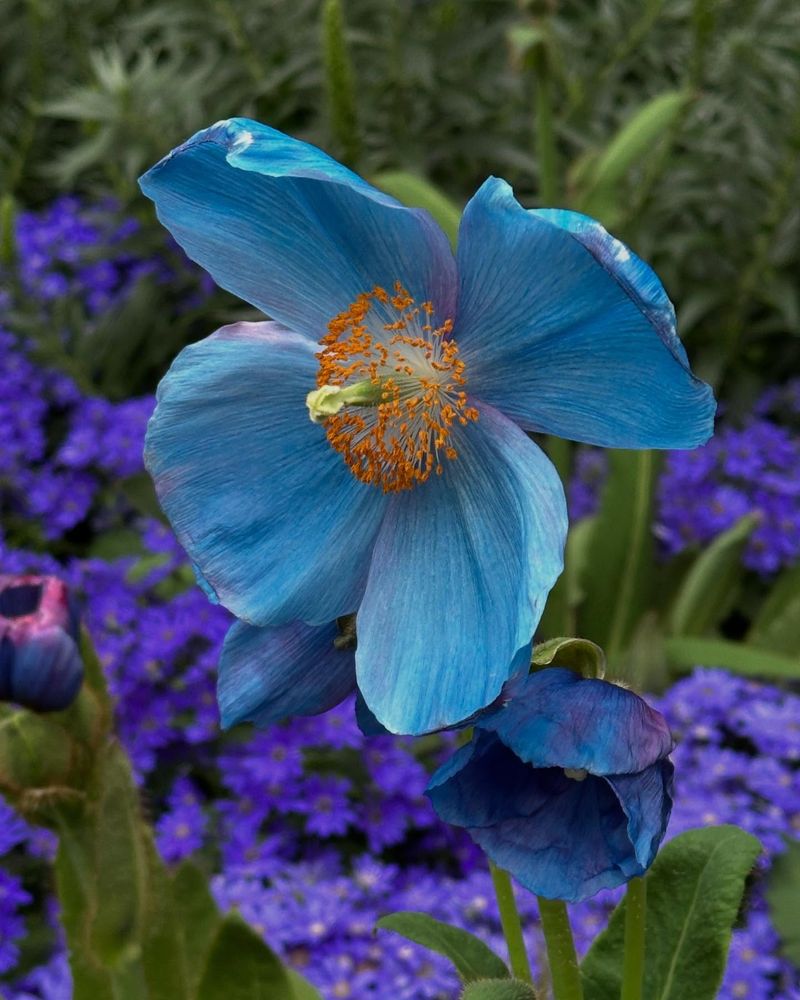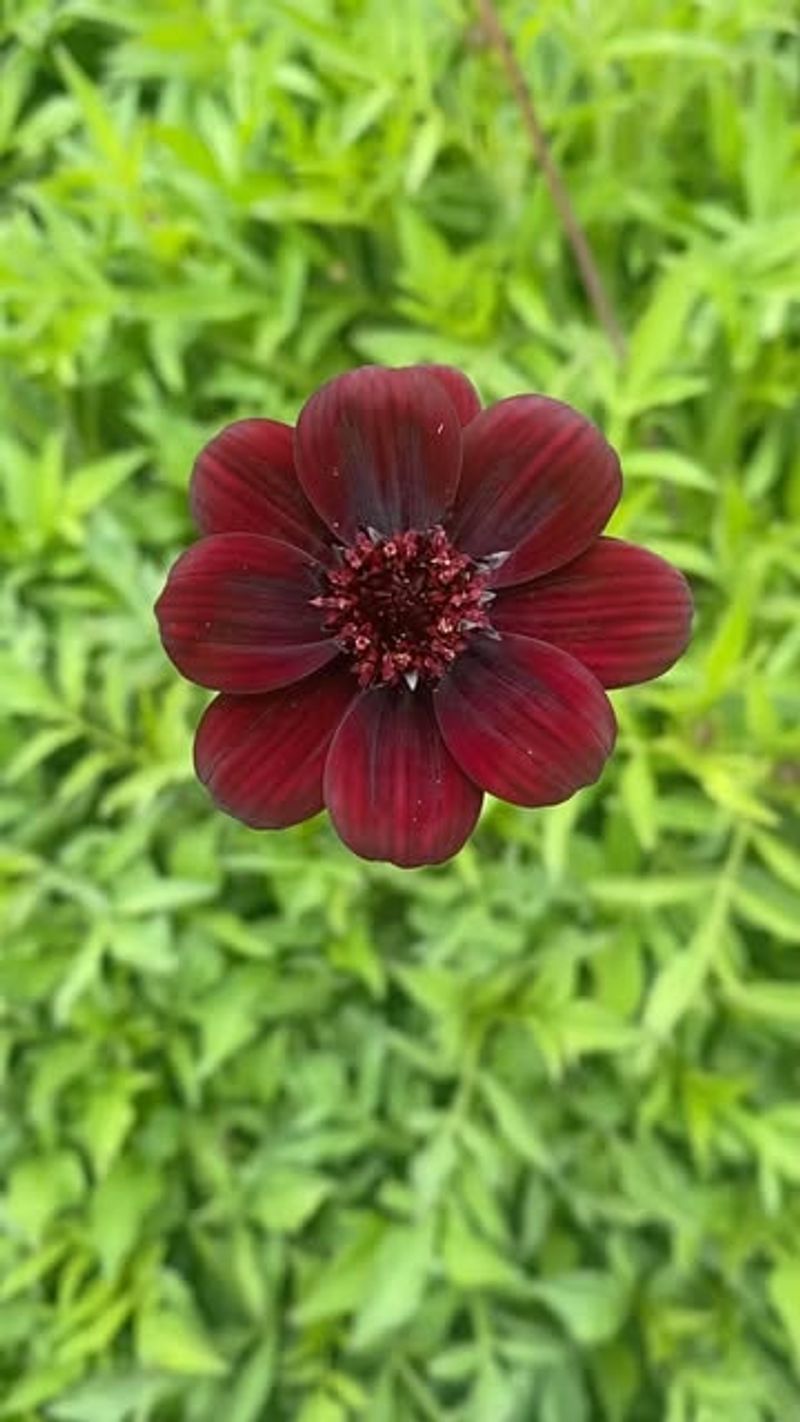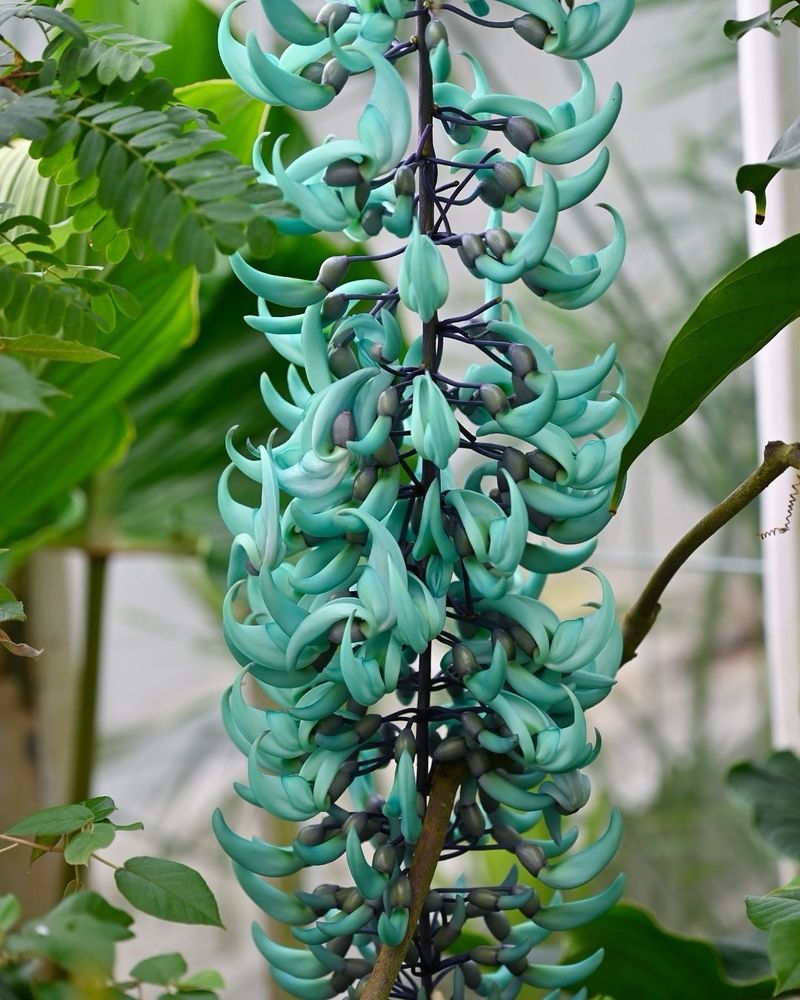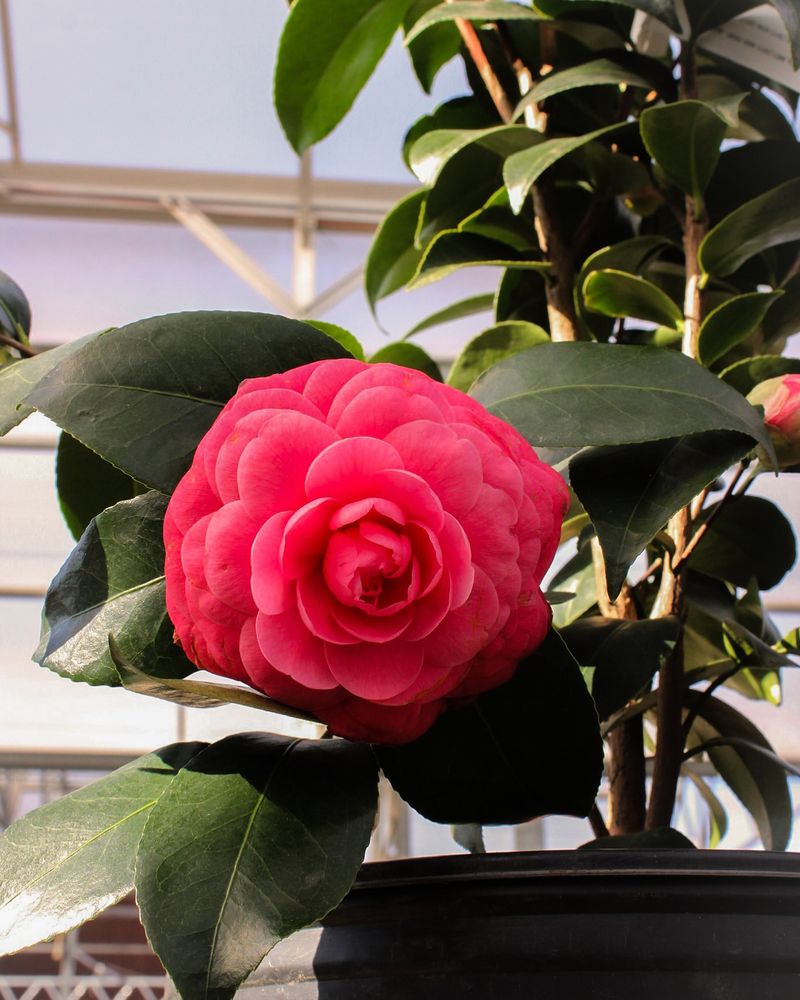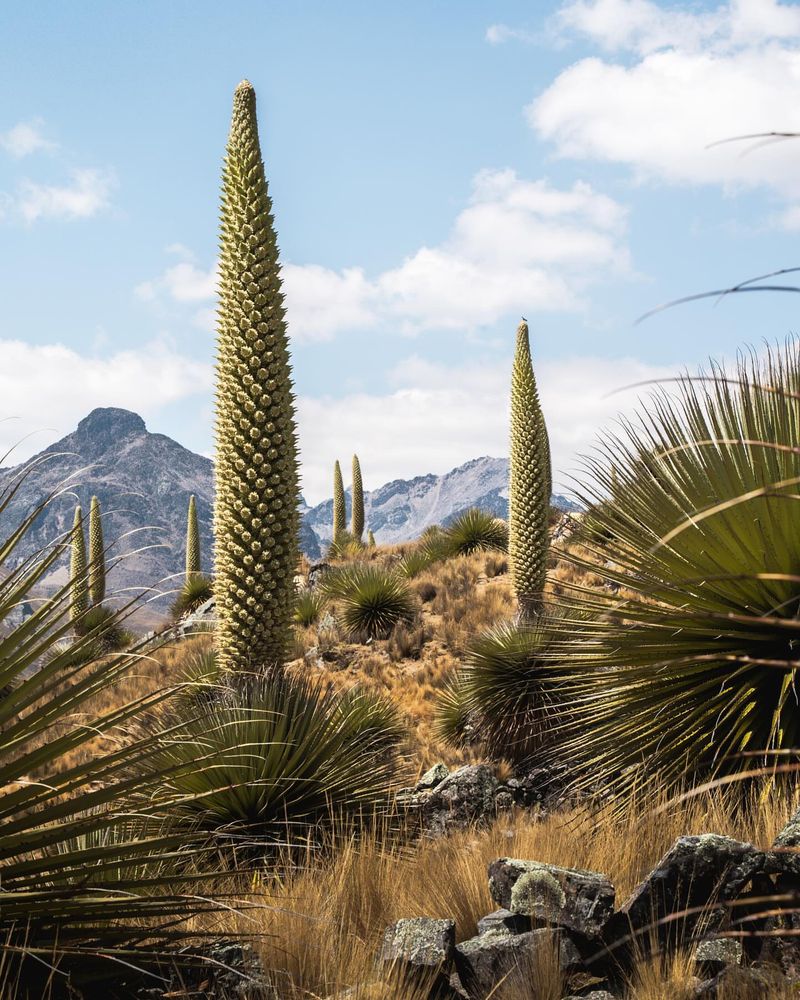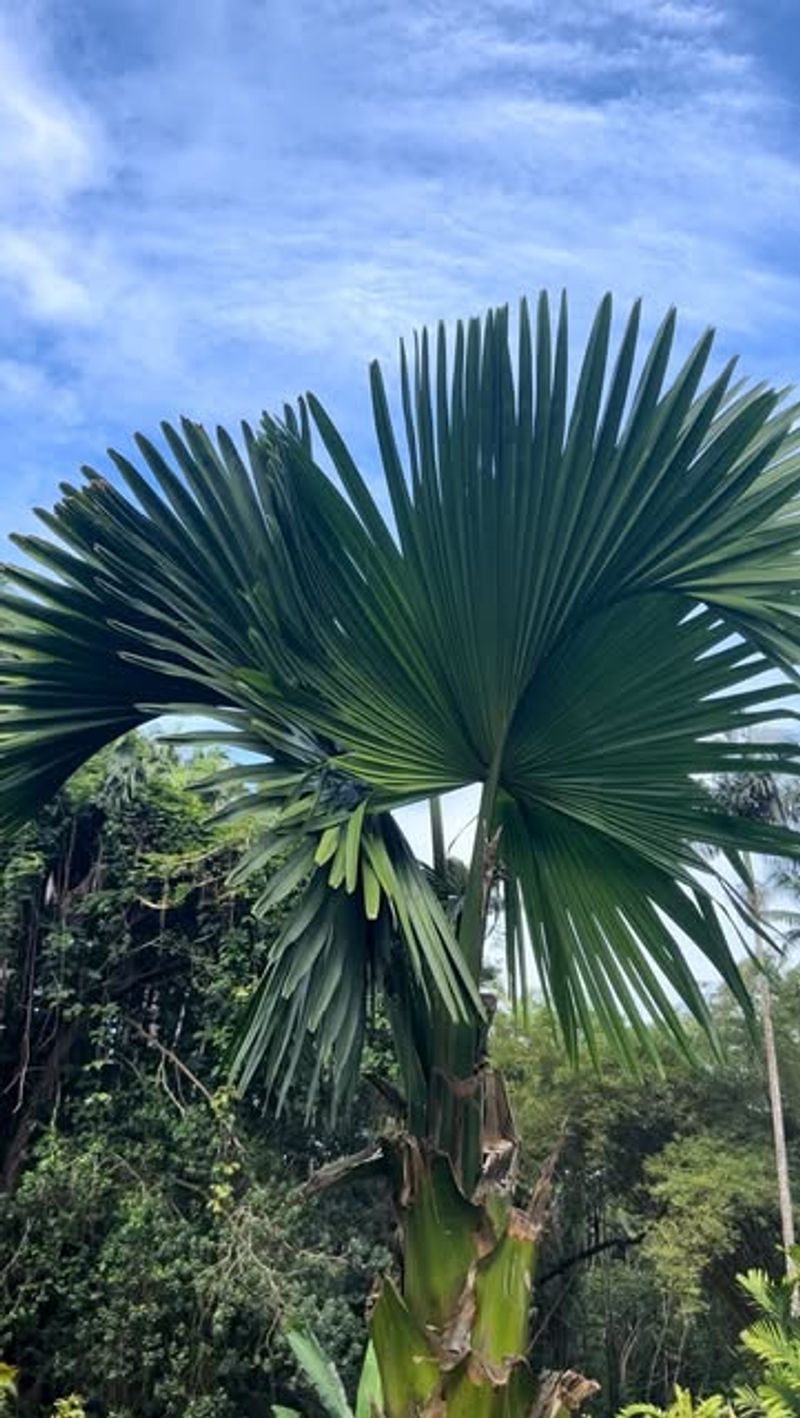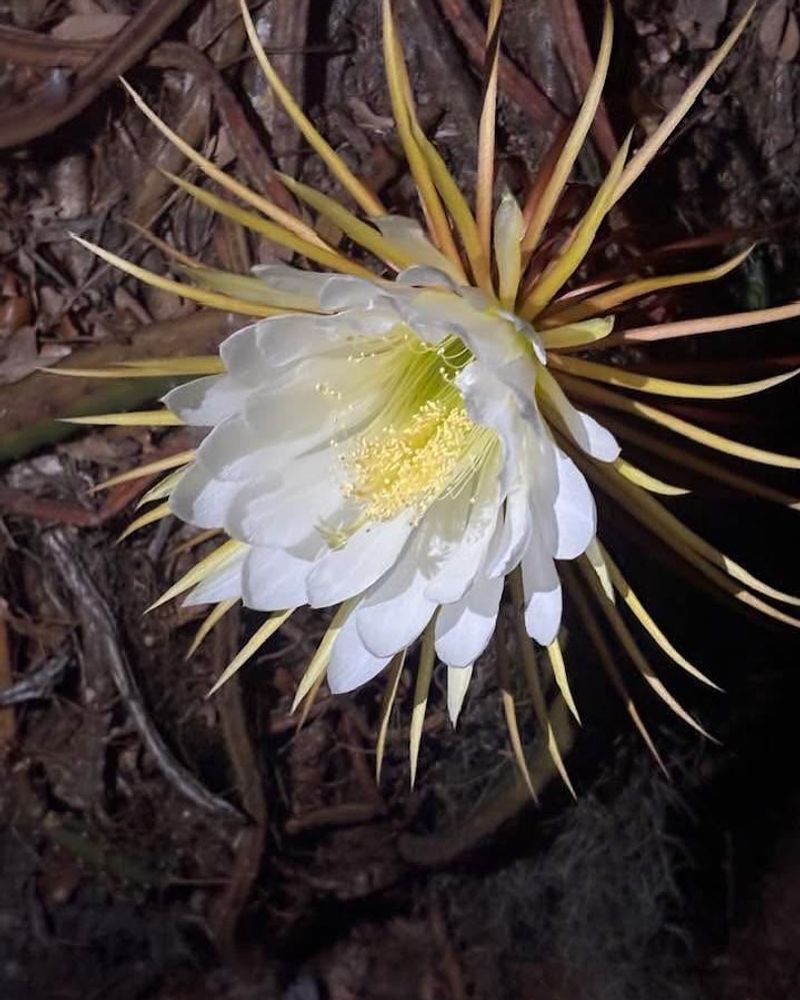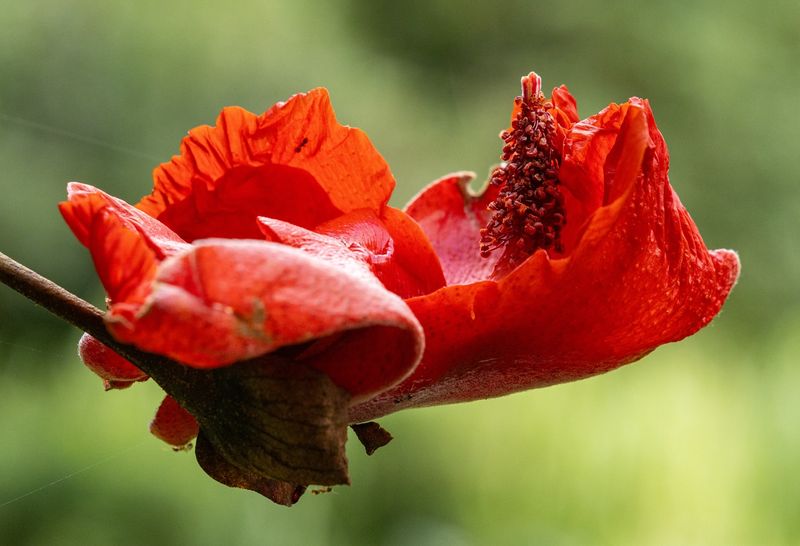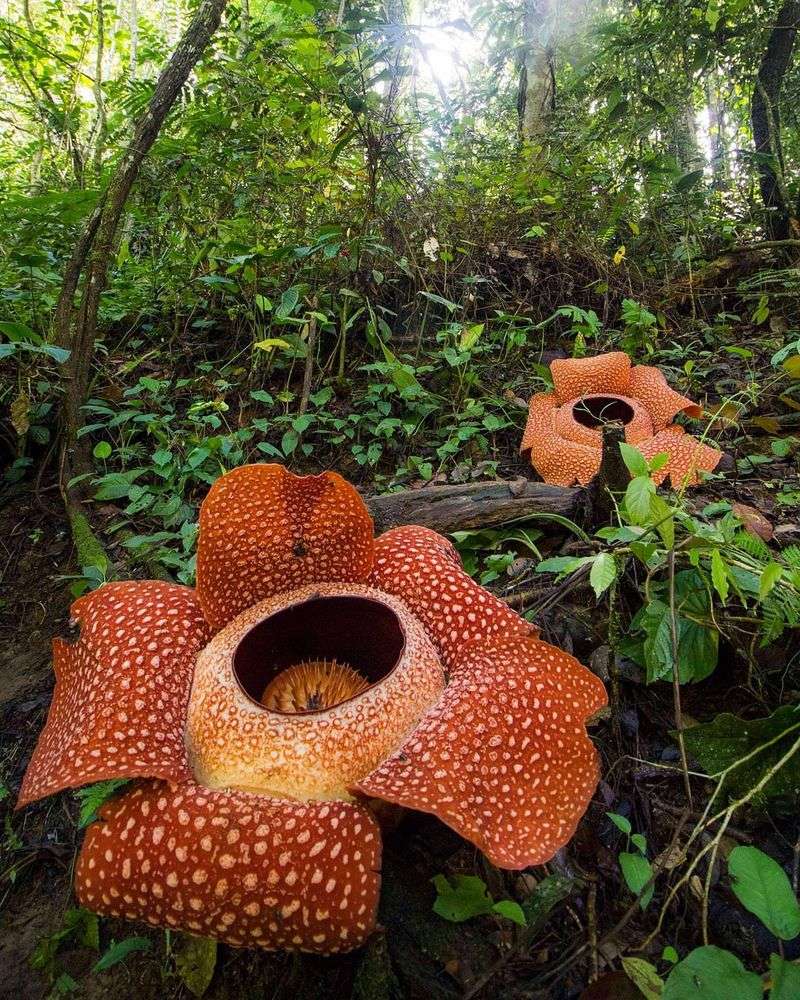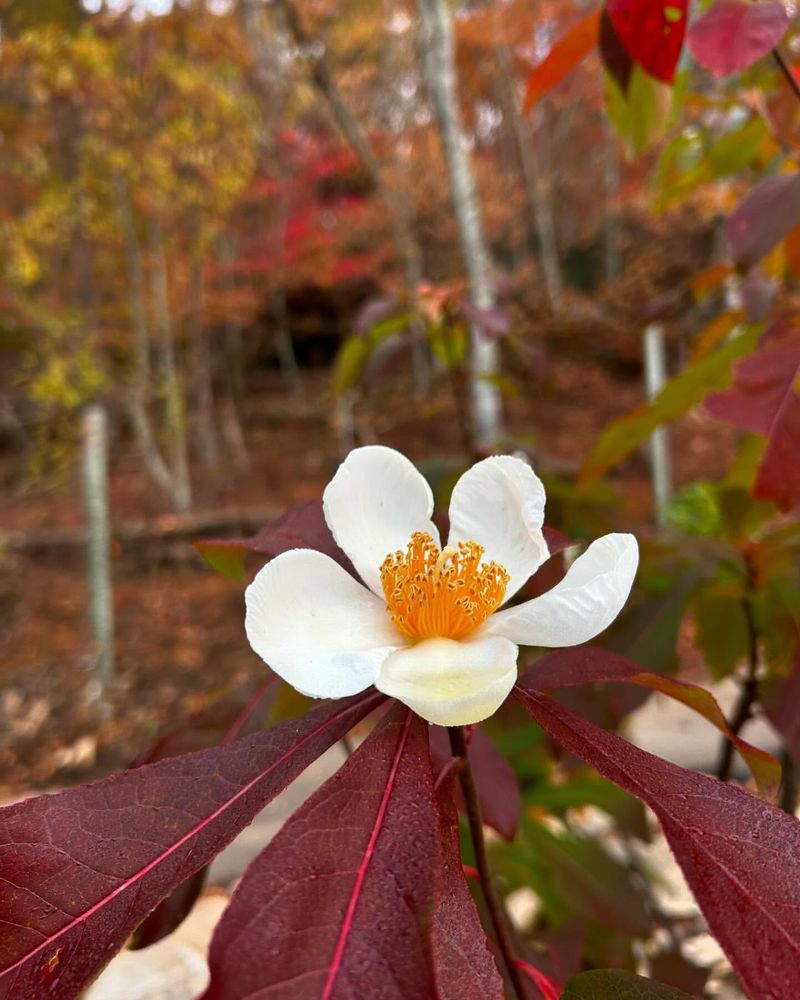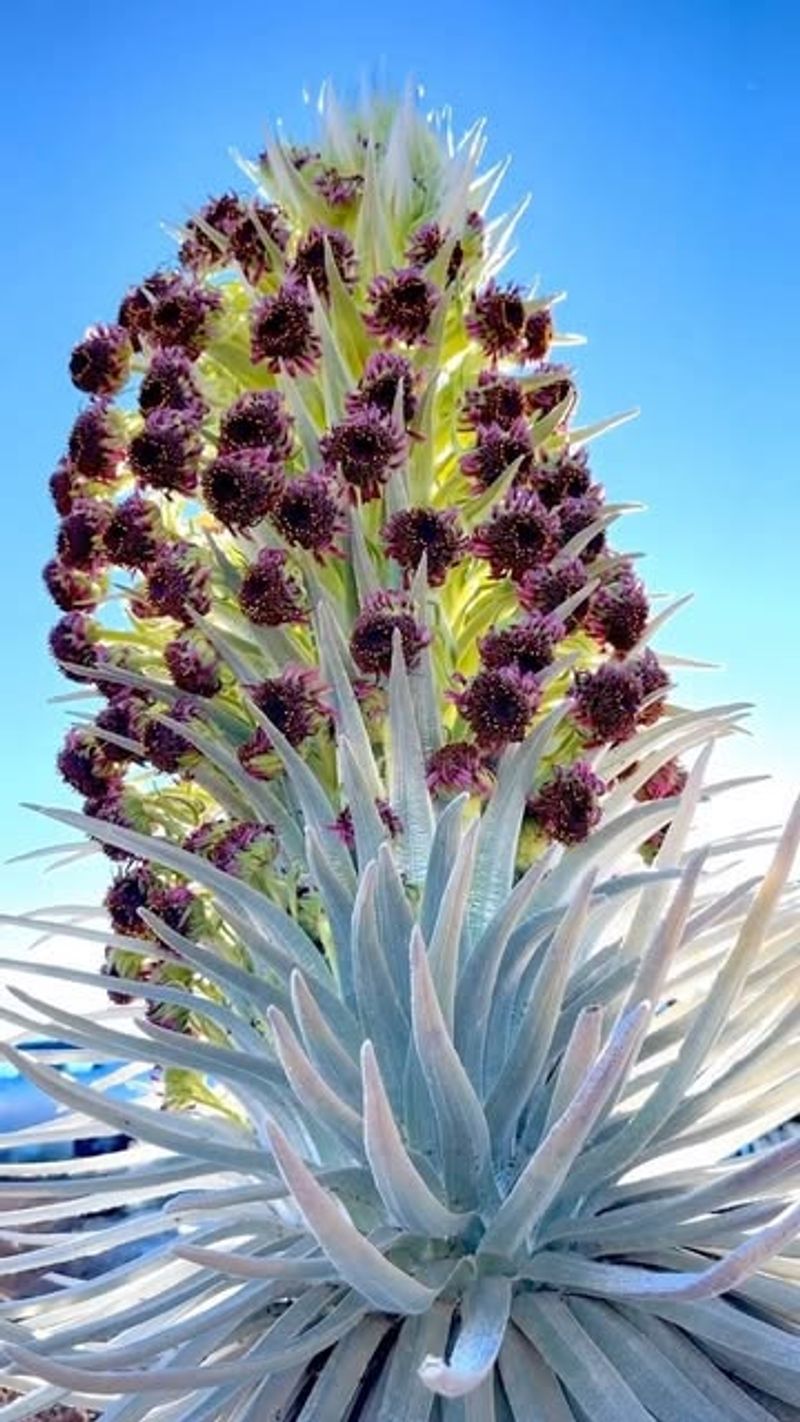Some flowers don’t bloom often—but when they do, they stop you in your tracks. These 16 stunning blooms wait all year to make their grand entrance, showing off colors, shapes, and scents that feel almost too magical to be real.
Rare, dramatic, and totally worth the wait, these once-a-year wonders are the hidden gems of the flower world.
1. Corpse Flower (Amorphophallus titanum)
Standing tall at up to 10 feet, this Indonesian giant creates a spectacle when it finally decides to bloom after 7-10 years of growth. The massive burgundy flower unfurls for just 24-36 hours, releasing a notorious stench of rotting flesh to attract pollinating insects.
Botanical gardens worldwide maintain these plants, sending alerts when blooming begins so visitors can witness this rare event. The flower generates heat during blooming, which helps spread its distinctive odor further into the jungle canopy.
2. Queen of the Night (Epiphyllum oxypetalum)
Moonlight reveals the breathtaking secret of this cactus species when its fragrant white blooms unfurl for a single night. Growing naturally in tropical forests of Mexico and parts of South America, these plants produce flowers measuring up to 7 inches across.
Plant enthusiasts often stay up until midnight to witness the spectacular opening, which happens in slow motion over several hours. By morning, the magnificent display withers away, leaving only photographs and memories until next year’s brief performance.
3. Kurinji Flower (Strobilanthes kunthianus)
Painting the Nilgiri Hills of South India blue every twelve years, Kurinji flowers transform entire landscapes when they simultaneously bloom. These plants patiently grow for over a decade before erupting in a synchronized display that attracts tourists from around the world.
Local tribes mark time by these blooming cycles, with traditions and folklore built around the twelve-year wait. The next major flowering is expected in 2030, when millions of these shrubs will turn mountainsides into seas of purplish-blue for just a few weeks before fading.
4. Ghost Orchid (Dendrophylax lindenii)
Floating like apparitions in Florida’s swamps, ghost orchids bloom for just two weeks each summer. These rootless plants attach to cypress trees, producing ethereal white flowers that seem to hover in mid-air on thin stems.
Extremely endangered and notoriously difficult to grow, these orchids were featured in the book “The Orchid Thief.” Pollinated exclusively by giant sphinx moths with proboscises long enough to reach their nectar, these mysterious blooms represent one of botany’s most specialized relationships.
5. Youtan Poluo (Udumbara flower)
Smaller than a grain of rice, the legendary Youtan Poluo appears once every 3,000 years according to Buddhist scripture. Modern sightings of these microscopic bell-shaped blooms growing on metal, wood, and other unusual surfaces have sparked wonder and debate.
Scientists suggest they may actually be lacewing eggs rather than true flowers. Nevertheless, their appearance is considered auspicious in many Asian cultures. These tiny white structures last only a few days before disappearing, adding to their mystical reputation.
6. Himalayan Blue Poppy (Meconopsis grandis)
Glowing with an otherworldly blue hue, these poppies bloom briefly during the short Himalayan summer. Gardeners consider them the holy grail of flowers, as they’re nearly impossible to grow outside their native high-altitude environment.
First discovered in 1922, these flowers require specific soil conditions and cool temperatures. Each silky-petaled bloom lasts just a few days before scattering in the mountain winds. Their true blue color, rare in the flower world, comes from specialized cellular structures rather than pigments.
7. Chocolate Cosmos (Cosmos atrosanguineus)
Smelling exactly like chocolate, these velvety maroon flowers bloom during summer months in their native Mexico. The original wild species went extinct, with all modern plants propagated from a single clone discovered in 1902.
Gardeners cherish these flowers for their unique fragrance, which intensifies in warm evening air. The chocolate scent comes from vanillin compounds similar to those in cocoa. Each bloom lasts only a day or two, with plants producing new flowers throughout their brief growing season.
8. Jade Vine (Strongylodon macrobotrys)
Hanging like turquoise chandeliers from Philippine rainforest trees, jade vines produce their spectacular blooms just once annually. The claw-shaped flowers grow in cascading clusters up to three feet long, displaying a color almost nonexistent elsewhere in nature.
Originally pollinated by bats in their native habitat, these endangered plants rely on human intervention in cultivation. Their unusual blue-green pigmentation evolved to stand out in moonlight for nocturnal pollinators. Each spectacular flowering lasts about two weeks before the vine returns to its leafy state.
9. Middlemist Red (Camellia japonica)
Possibly the rarest flower on Earth, only two known specimens of Middlemist Red remain alive today. Originally from China, this camellia produces deep pink (not actually red) blooms once yearly for a brief period in early spring.
One specimen grows in New Zealand, the other in England, both carefully preserved in conservatories. Brought to England in 1804 by gardener John Middlemist, these flowers disappeared entirely from their native China due to habitat destruction.
10. Puya raimondii (Queen of the Andes)
Reaching for the sky at heights up to 30 feet, this Andean giant blooms once after 80-150 years of growth, then dies. Native to high-altitude Peru and Bolivia, each plant produces a massive flower spike with up to 8,000 individual white blossoms.
Indigenous communities celebrate these rare blooming events as significant omens. After flowering, the plant channels all remaining energy into producing millions of seeds before dying completely. Climate change threatens the few remaining wild populations, making each blooming increasingly precious.
11. Talipot Palm (Corypha umbraculifera)
After growing silently for 30-80 years, this massive palm produces the largest inflorescence in the plant kingdom before dramatically dying. Native to India and Sri Lanka, its terminal flower stalk can reach 25 feet tall with millions of small cream-colored blooms.
Ancient texts were written on dried Talipot leaves, which can reach 16 feet across. The flowering process takes about a year from start to finish. After setting fruit, the entire massive tree dies, having completed its life purpose of reproduction.
12. Night-Blooming Cereus (Selenicereus grandiflorus)
Known as “Queen of the Night,” this unassuming cactus transforms once yearly into a nocturnal wonder. The gangly, ordinary-looking plant produces spectacular white flowers up to 8 inches across that open for a single night.
Native to desert regions of the Americas, these plants coordinate their blooming with the full moon. Their powerful vanilla-like fragrance attracts sphinx moths for pollination. Families often host viewing parties when their plants bloom, as the flowers begin opening at sunset and wither with the morning sun.
13. Kokia cookei (Kokia Tree)
Brought back from the edge of extinction, this Hawaiian tree was once reduced to a single specimen in the wild. Its brilliant red flowers bloom briefly once per year, resembling twisted ribbons or curved feathers.
Conservation efforts saved this species through careful propagation. Originally used by native Hawaiians for red dye, fewer than 50 cultivated trees exist today. Each bright scarlet bloom lasts just a few days before falling, with flowering season coinciding with traditional Hawaiian new year celebrations.
14. Rafflesia arnoldii (Corpse Lily)
Producing the world’s largest single flower, this parasitic plant emerges from its host vine just once yearly as a massive five-petaled bloom up to 3 feet across. Native to Indonesian rainforests, it has no leaves, stems, or roots of its own.
The flower emits a powerful stench of decaying flesh to attract pollinating flies. From bud to bloom takes 9 months, but the actual flowering lasts only 5-7 days. Scientists still struggle to cultivate these plants outside their natural habitat, making each wild blooming a celebrated event.
15. Franklin Tree (Franklinia alatamaha)
Discovered in 1765 by American botanists John and William Bartram, this tree disappeared entirely from the wild by 1803. Today it exists solely in cultivation, producing camellia-like white flowers with golden centers for a brief period each autumn.
Named after Benjamin Franklin, all living specimens descend from seeds collected by the Bartrams. The fragrant blooms appear just as the leaves begin turning brilliant red and orange. This botanical ghost represents one of history’s narrowest conservation successes – saved just before vanishing forever.
16. Haleakalā Silversword (Argyroxiphium sandwicense)
Growing for up to 90 years as a spherical rosette of silver sword-like leaves, this Hawaiian plant flowers just once before dying. Found only near the summit of Maui’s Haleakalā volcano, it produces a spectacular flowering stalk up to 6 feet tall covered with hundreds of sunflower-like purple blooms.
Climate change and introduced species threaten the remaining population. Each plant transforms dramatically during its single flowering event, channeling decades of stored energy into reproduction. After setting seeds, the entire plant withers away, its life mission complete.

